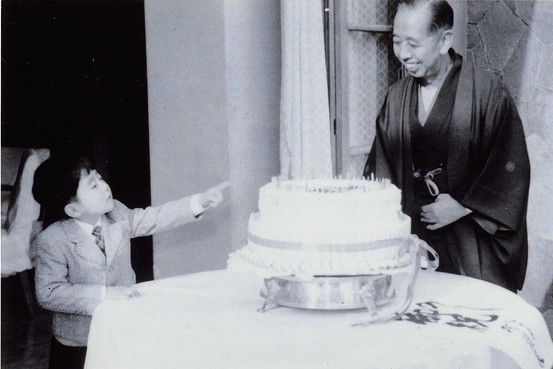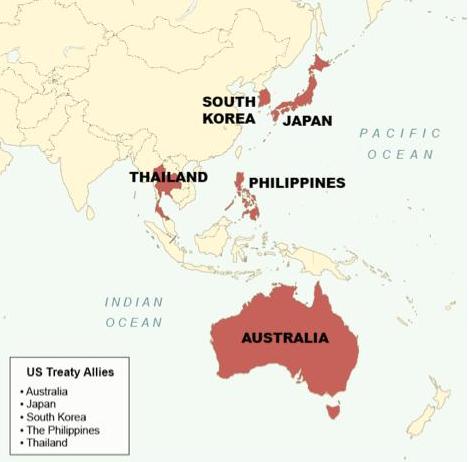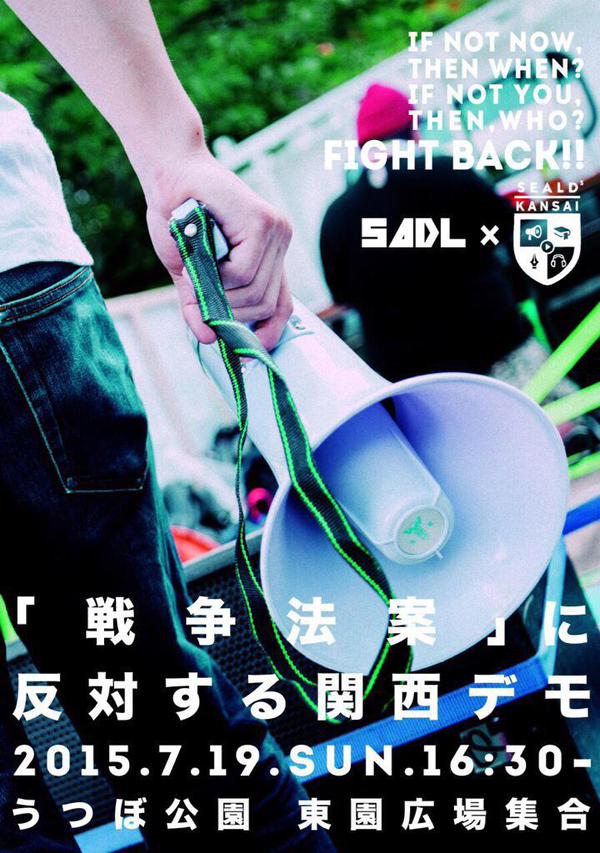by Brian Hioe
語言:
English
Photo Credit: SEALDs
ONCE AGAIN, we find ourselves in the situation where tens of thousands of individuals gather on the streets in an Asian metropolitan area, but the situation is largely not reported globally. Today we find ourselves in Japan, where up to sixty thousand gathered last Wednesday in front of the Diet to protest the repeal of Japan’s Article 9 and one hundred thousand are expected to gather over the weekend against the planned repeal and in favor of that Article 9 remain as part of the Japanese constitution. Though the actual crowd count is unclear, over ten thousand gather daily.
To be sure, protests have seen some coverage in international media. But the protests have been just reported on as protests, nothing particularly special. What goes largely undiscussed is the means by which the repeal of Article 9 represents the overturning of the entire Japanese post-war social order at the hands of Shinzo Abe and his LDP.
Is Japan a democracy? Was it ever a democracy? These are the questions at stake here.
Japanese Imperial Nostalgia and the Repeal of Article 9: An Attempt to Undo the Postwar History of Japan
JAPAN WOULD seem to represent the particular situation in which a country has renounced the use of war again. Article 9 of the constitution vows the use of military force by Japan only in the case of self-defense. Hence despite possessing a large and powerful de facto military, the particular legal situation of Japan is that it does not legally possess a standing military.
Article 9 originates under historically unclear circumstances in the period of post-war occupation by American forces led by General Douglas MacArthur. Conflicting accounts exist as to whether Article 9 came into being at the hands of Japanese authorship at the hands of Japanese Prime Minister Kijuro Shidehara or authorship by American occupation officials. This, of course, reflects the highly politicized nature of Article 9 and its implications for Japan. Nevertheless, that Article 9 was allowed to pass into law by the American government reflects the priorities of the American post-war occupation of propping up Japan as a power in the Asia-Pacific region in order to counter the rising threat of Communist China—while also reassuring other Asia-Pacific countries that Japanese militarism would not become a danger again in the future.
In this way, however, Article 9 has come to powerfully stand for the idea of a pacifist Japan, a nation that has renounced the use of war and the crimes of the Pacific War committed against other Asian peoples. While Article 9 had its true origins in American post-war hegemony over Japan and it did not emerge out of pacifist aspirations, Article 9 would come to stand for the Japan which emerged from the flames of World War II having renounced the possibility of future bloodshed.
The use of the atom bomb by the US upon Hiroshima led to the image of Japan as a victim of World War II, which has been used by some Japanese right-wing nationalists in order to deflect attention from the crimes committed by the Japanese empire. Yet in cognizance of the history of Japanese empire and that just as Japan was victim so too was it a victimizer, support of Article 9 represents the affirmation of a Japan as as a country which, out of that history, promises to never become a victimizer again. This is, however, precisely what Shinzo Abe and his LDP wish to undo—and in doing so, to undo the postwar historical order and a post-war sense of identity founded upon the aspiration towards peace.
Born shortly after the war in 1954, current Japanese Prime Minister Shinzo Abe is decidedly a creature who carries on the aspiration of pre-war militarist politicians who lived on past the Pacific War and saw the post-war period as the infliction of a a set of limitation upon Japan which had prevented Japan from realizing its greatness. Abe’s grandfather was, after all, Kishi Nobusuke, Class A War Criminal as Japan’s Minister of Munitions and in the post-war period, the 56th and 57th Prime Minister of Japan. Kishi instilled in his grandson the ideals of reaffirming Japanese greatness after the humiliation inflected upon in the post-war, as we can see in Abe’s frequent paeans to his grandfather.
 Kishi Nobusuke and a young Shinzo Abe
Kishi Nobusuke and a young Shinzo Abe
And we see in Kishi the militarist and nationalist tendencies which are so troubling in the figure of Shinzo Abe. Kishi, of course, was an apologist for World War II, honoring Tojo and other key figures of Japanese militarism. No doubt when Shinzo Abe pays homage to Class A War Criminals from the Pacific War, as has been many times an object of controversy, he has his grandfather in mind—Abe has even acknowledged as such. And he continues his grandfather’s legacy in acting as an apologist for the Pacific.
Indeed, so it is that Abe has pushed for revisionist history to be taught in high school textbooks, as downplaying the legacy of the Pacific War or claiming that Japan undertook the Pacific War for the sake of freeing the rest of Asia from western domination. Under Abe, there is widespread denial of the use of comfort women by Japanese troops during the Pacific War, that is, the sexual enslavement of female members of conquered populations by the Japanese military.
Yet in throwing the entire history of the post-war period of Japan into question, what Abe brings out most of all is the other particularity of Japan apart from from its lack of a standing military—namely, the one-party rule of Japan for decades by the conservative Liberal Democratic Party. Of the East Asian capitalist nation-states, it is certainly true that Japan was never an authoritarian rule of martial law like in South Korea or Taiwan. But the one-party rule of the Liberal Democratic Party persisted for so many years without comment by the outside world, which was too blithe to conclude that Japan was a democracy—that is, the unique “democracy” which had the quality of being ruled only by one party. To this extent, what democracy has come to exist in Japan since the post-war is a hard-earned thing.
Is Japan Truly a Democracy? Was It Ever?
IT WOULD SEEM that in his nostalgia for the pre-war period, Shinzo Abe has a distaste for contemporary democracy. The Secrecy Act passed in 2013, after all, silenced dissent against his rule by claiming that forms of political disagreement or criticism were forms of selling state secrets. And it didn’t even requires the active enforcement of the law to cripple the media’s ability to report on anything other than Shinzo Abe’s preferred vision of reality—in spite of that the media was already far from exactly critical of the government to begin with.
But if under Shinzo Abe’s government we see the Japanese post-war state revealed in its true colors, we might note that the grounds for Japanese democracy have always been tenuous. One party rule was without any real challenge until the early 1990s, when fractures in the LDP allowed minor parties to form challenges to LDP rule by way of coalition. It was only with the victory of the Democratic Party of Japan in 2009 that we see something resembling two party democracy in Japan. Yet the inability of the DPJ to distinguish itself from the LDP on critical issues of US military bases in Okinawa and nuclear power, following the Fukushima incident, led to the decline of the DPJ. Indeed, now the DPJ is being spoken of as one among many “third parties”—never mind the absence of “two party” democracy in Japan to begin with—rather than as an opposition which operates on equal grounds to the LDP. It would seem that Japan has returned to one party rule.
 American treaty allies in the Asia-Pacific region. Photo credit: CRS report RL33821
American treaty allies in the Asia-Pacific region. Photo credit: CRS report RL33821
Yet why would the repeal of Article 9 happen now, as upsetting the previous post-war order of Japan? Namely, we can understand present events as part of the broader American Rebalance to Asia to oppose the rise of China. Indeed, it is a shared characteristic of Abe and his grandfather that neither opposed American bases in Japan, and it is such that their vision of the resurgence of Japanese imperial military greatness was firmly within the parameters of broader American hegemony in the Asia-Pacific.
If for so many years, one party rule existed in Japan because it was a convenient way to maintain a political order that America could count on to behave in a certain way amenable to its foreign policy aims in the Asia-Pacific. It was such that, for example, American academics and political commentators were willing to turn a blind eye to that a “democracy” could have only one political party. Instead of chalking this up to the fact that Japan was, in some sense, far from a normal democracy, they instead concluded that this was some unique characteristic of Japan as derived from its culture. So has one party rule persisted for so many years. What democracy has to come exist in Japan is tenuous. And this is why the Japanese people are taking to the streets by the tens of thousands in the present—in defense of democracy. This is what the repeal of Article 9 threatens in the eyes of Japanese.
Japan’s Democratic Crisis
WHERE DOES THE resistance to the repeal of Article 9 originate, then? A new development within present struggles would seem to be the Students’ Emergency Action for Liberal Democracy (SEALDs) group, which has succeeded in mobilizing young college age activists about the Article 9 issue—though to be sure, it aspires towards a very different “Liberal Democracy” than the that of Abe’s Liberal Democratic Party. We may situate present events, then, alongside past East Asian student movements in the past year such as Hong Kong’s Umbrella Movement or Taiwan’s Sunflower Movement, as largely prompted by the shifting geopolitical terrain of the Asia-Pacific.
More largely, the history of struggle against the Japanese one party state since the post-war period has concerned the uncertain relation to the history of Japanese militarism and Japanese post-war rule by American military hegemony. The ANPO struggle of the 1960s, for example, resisted the signing of the Treaty of Mutual Cooperation and Security Between the United States and Japan in that it placed Japan firmly under American military hegemony. But this was hardly a right nationalist movement in favor of Japanese militarism, where it was a movement of the radical Left, and those who affirm its legacy in the present are among those struggling against the repeal of Japan’s Article 9. Indeed, those who continue to resist US militarism in the Asia-Pacific, including those who are against the maintenance of American military bases in Okinawa, never mind the eviction of entire villages which forcibly occur for base expansion or the yearly sexual assaults of women at the hands of American troops—are among those against the repeal of Article 9.
 SEALDs poster. Photo credit: Students’ Emergency Action for Liberal Democracy
SEALDs poster. Photo credit: Students’ Emergency Action for Liberal Democracy
Indeed, we may point that the larger constellation of socioeconomic issues which are expressed in present protests, for example, in present protests as an expression of Japanese young people’s inability to find a place in the Japanese economic order as we see in the rise of “irregular employment” and “black companies” exploitative of their employees in Japan. This once more draws parallels between present protests and Hong Kong’s Umbrella Movement or Taiwan’s Sunflower Movement which were also, in some sense, the expression of socioeconomic discontents.
Yet if Japanese democracy has been something hard-earned, the repeal of Article 9 would seem to go against Japanese democracy and everything it stands for. All indications are that a substantial part of the public opposes the repeal of Article 9, but at the hands of a combination of right-wing Japanese nationalism and obeisance to their American overlords, Abe and his fellow militarists pursue the repeal of Article 9 against the popular will of the Japanese public. That the repeal of Article 9 was achieved by Abe contravenes Japanese democratic rule of law, through the use of unconstitutional measures to pursue its repeal.
Never mind that in recent years the Japanese government has been all too willing to contravene the people’s will, for example, in forcing through policies of nuclear power to kowtow to the interests of the nuclear lobby in despite popular opposition to nuclear power following the Fukushima incident. The protests against nuclear energy in 2012, as the largest set of protests Japan had seen since the 1960s, were a rehearsal for the present—as well as a set of incidents also broadly unreported upon by international media. However, it is that in the present we confront Japan’s crisis of democracy.
There will be those that point to how the unbridling of Japan’s military can be a means of counterbalancing rising Chinese aggression. Or how the repeal of Article 9 could provide for the normalization of Japan, crippled as it was as a non-normal state without a military—which served to place Japan firmly under American military auspices. But the real question at stake here is the question of Japanese democracy.
What do the Japanese people desire? Will it be that, irrespective of their desires, the repeal of Article 9 has to take place at the behest of Japanese right-wing nationalists as Shinzo Abe and his ilk? That is to be seen. And if Japan seems on the precipice of another wave of popular protest, the question is whether the Japanese people, which has chosen to take a stand against militarism and in favor of democracy, will succeed in its aspiration towards peace and freedom.




